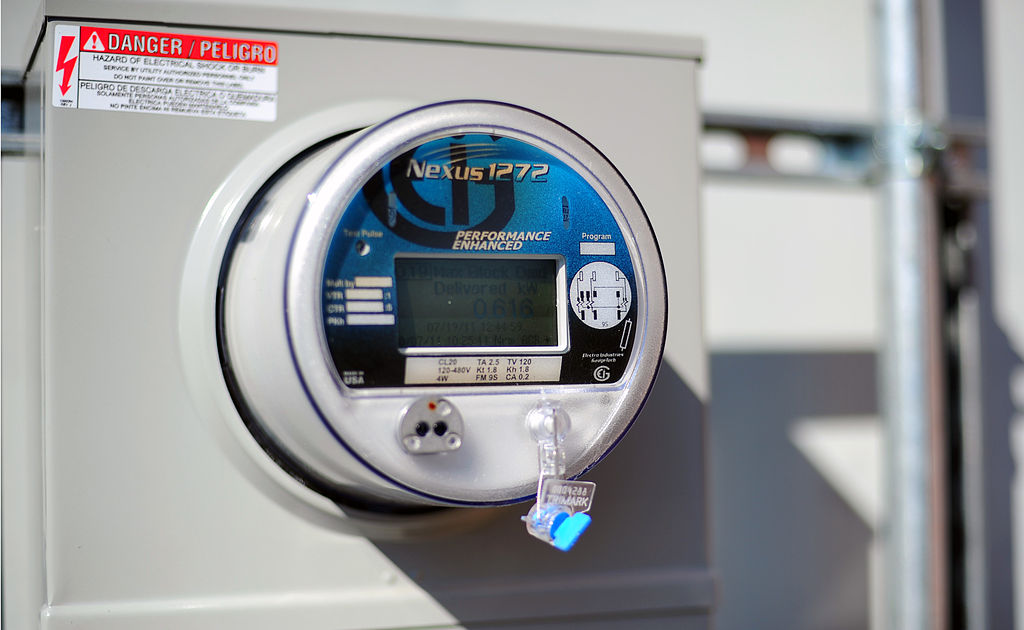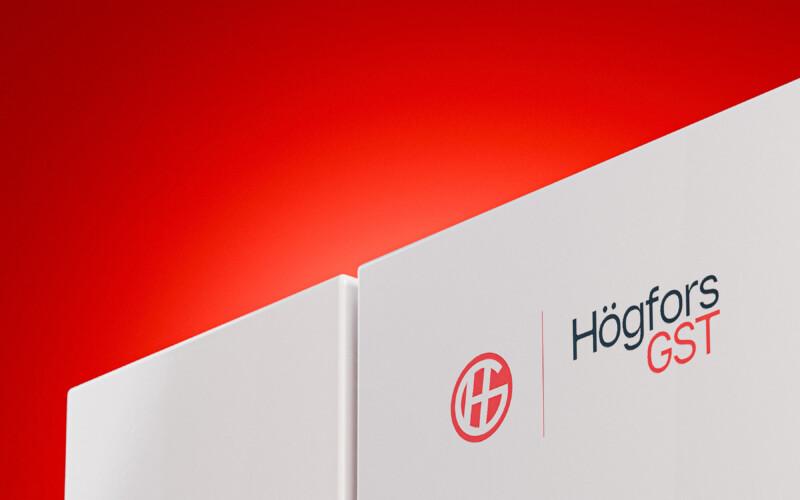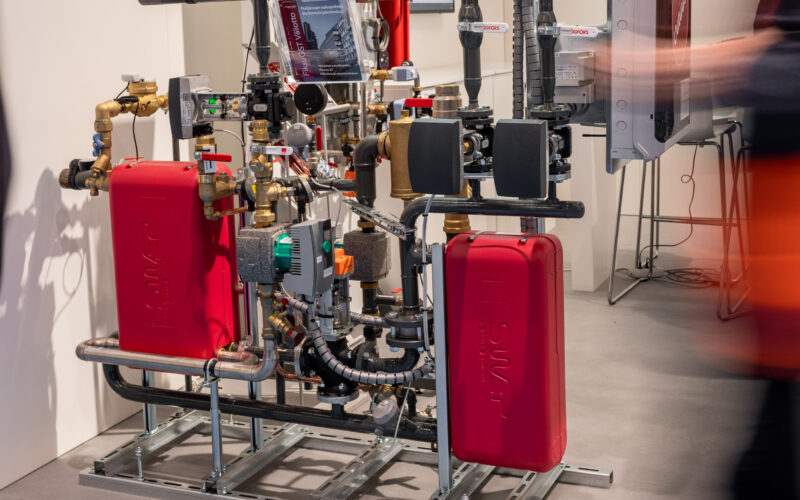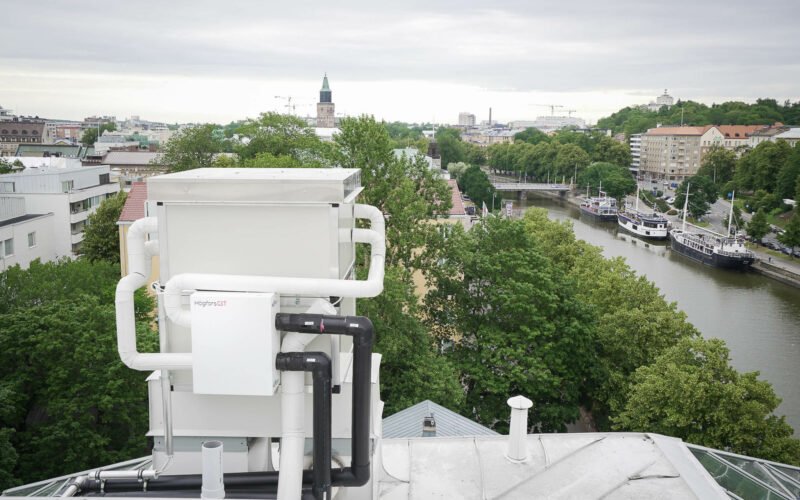District heating has been around for almost two centuries, during which it has developed into a primary way of heating urban homes. However, the current decade will revolutionize district heating in an unprecedented way, as the emergence of the fourth generation district heating will add intelligence as an integral part of district heating systems.
The fourth-generation district heating system (4GDH) features countless smart devices that extract huge amounts of modern “currency”: namely information.
The proper utilization of the information collected and reported by 4GDH smart devices is key to the development of a district heating system. The opinion of our expert Jussi Sjöström is clear.
– 4GDH cannot exist without intelligence. More energy-efficient heating also requires mechanical innovations, but intelligence acts as an enabler of the biggest development steps. In the big picture, collecting and utilizing data offers tremendous potential to develop the entire system.
The biggest technical leap in the history of district heating
The importance of smart solutions for the development of district heating in the 2020s is significant. In fact, we think it is the biggest technical leap that district heating has taken in its entire history! Intelligence and smart solutions have the potential to unleash such a huge number of improvements to district heating systems that the possibilities seem nearly endless.
In the case of district heating, smart solutions can be roughly divided into two main groups: intelligent controllers and devices, and systems that utilize the data from these controllers and devices.

Smart energy meters collect data that can be utilized in many ways
Smart devices include innovations like smart substations that give the ability to control the entire heating system of a property through a browser-based control system. Smart devices also feature heating optimization, making the system as efficient as possible while saving energy and money. IoT (Internet of Things) is also an important part of the district heating system of the future, for example in the form of remotely readable sensors.
Information saves money
Proper data collection and utilization will improve the district heating network and systems in many different ways, as it will benefit all stakeholders in the district heating network in the long run.
Energy consumption reports from the heating system of an individual property help the end-users to optimize the operation of their own heating system, which is saving energy and money. At the same time, information collected by several different customer devices on can be utilized at the power plant, for example in optimizing production.
According to Sjöström, the investment in smart solutions pays for itself in terms of cost savings.
– Intelligence offers energy companies a view to the end consumers’ boiler rooms. Currently, energy companies have to make decisions blindly, without accurate information about the operation of the network. Smart solutions provide comprehensive information from different points in the network, enabling better and more cost-effective decisions to be made by the power plant. This reduces heating costs and emissions when the power plant can match their supply flow rates and temperatures according to demand.
Juha Virkki, who is responsible for HögforsGST’s Engineer service, reminds that the benefits of properties’ smart energy systems can be measured in cold hard cash.
– The properties save money in two ways: first of all, their overall energy efficiency is improved, but also in the way that the heating system’s maintenance costs are lower. Today, a large proportion of problem situations can be resolved remotely with a system specialist, which is significantly cheaper and faster than on-site troubleshooting. Thanks to remote monitoring, it is also possible to detect a fault even before it causes problems with heating. When problems and malfunctions can be addressed quickly, the life cycle of the entire system is extended and costs are reduced at the same time.

Fiksu Control Systems allows for easy control and monitoring of the whole heating system
The challenge: managing huge amounts of data
Current technology allows data to be collected from almost anywhere. The district heating system can monitor, for example, pressures, temperatures, flow rates and energy consumption. With this development, smart sensors are being installed in ever growing numbers and the amount of data is constantly increasing. However, according to Virkki, the sheer amount of data alone doesn’t help.
– Installing loads of sensors will not help much if the information obtained from them cannot be processed and utilized. From a large amount of data, it is necessary to be able to compile exactly the right crumbs of information. These crumbs can then be compiled and used in optimizing and developing heating systems.
Modern cloud services have become an integral part of intelligent systems, enabling for example remote control systems and the sharing of real-time data between stakeholders.
Smart solutions are evolving at a rapid pace
According to Sjöström and Virkki, smart solutions are already widely available. Intelligence can be utilized in the control of a single heat pump or a substation as well as in huge heat pump plants. According to the twosome, the next step is to integrate individual intelligent devices and systems into an intelligent fourth-generation district heating network.
“We are currently working hard to create a cost-effective and fully functional way to integrate property-specific systems through an interface into an intelligent 4GDH network,” says Sjöström.
Although the development and demand for smart devices is growing, Virkki believes that it is impossible to predict the development very far.
– The sector is developing at such a tremendous pace that in 2025 we may already be living in a completely different situation than now. However, there will be a demand for intelligence, that is for sure.
Data collection is part of green development in district heating
4GDH solutions are helping to solve the biggest problem heating industry is currently facing. Reducing CO2 emissions and building climate-friendly practices in all areas of society is a growing trend.
Smart solutions are one way to reduce heating emissions across the district heating network. The already mentioned possibility for an energy plant to optimize its production reduces the amount of energy wasted through network losses and excess production of heat. Smart control systems are also able to anticipate and flatten consumption peaks. Smart substations and heating systems installed in buildings reduce energy consumption, but also improve the Delta-T of the district heating network. The cooler the water returning to the district heating plant is, the more efficiently the waste heat from flue gas scrubbers can be utilized. With cooler water, network losses are also reduced.
According to Virkki and Sjöström, intelligence will also make heating a more concrete part of people’s lives.
– Now that the heating system can be conveniently monitored from your home, people will certainly become more aware of their own heat consumption. People are also interested in where their district heating comes from. We will certainly see more and more energy companies offering their customers carbon-neutral district heating in the same way that carbon-neutral electricity is sold today .
New services and business models
Intelligence is involved in enabling the development of new business models for the heating industry as well.
– With the help of intelligence, the utilization of waste heat and other environmentally friendly forms of energy as part of district heating production is made easier. A consumer of district heating can also become a small producer of district heating. In this case, we are talking about two-way district heating, which is made possible by intelligence, says Sjöström.
– District heating is also expected to become more open and service-driven. With the help of smart devices, energy utilities will be able to offer their customers a more personal and high-quality service, which will certainly deepen the relationship between consumers and heat suppliers.
Juha Virkki is particularly interested in the opportunity to connect different energy networks to work together efficiently.
– With intelligent solutions, for example, electricity can also be used more efficiently for heat production in a heat pump plant, for instance. Sector coupling is a big deal in the future and intelligence acts as an enabler for this development.
– District heating is the open energy route of the future. The small producers of district heating mentioned by Jussi will become more common, as a huge amount of heating energy is available in industrial waste heat, for example. District heating is the best way to get this waste energy into circulation.
District heating of the future is smart, transparent and environmentally friendly
Smart solutions are here to stay, and no wonder: the benefits they bring to the district heating system are undeniable. The information provided by intelligent solutions on the operation of the entire network revolutionizes the way the district heating network is managed. In the future, energy companies will be able to optimize production and distribution and make decisions based on comprehensive data. Production and distribution optimization save energy and money and reduce heating emissions. The integration of new and low-emission energy sources into the district heating system is even more successful with the support of intelligent control systems.
The cost savings will also benefit the district heating customer’s wallet as modern heating systems reduce energy consumption and come with extended life cycle. Smart solutions open up the possibility for energy companies to develop new business models and offer even better service to their customers. Intelligence also brings operational security to the heating system: possible faults are detected quicker via the remote user interface, which extends the life of the equipment and reduces maintenance costs.






